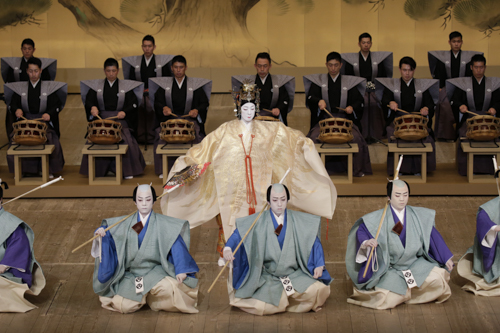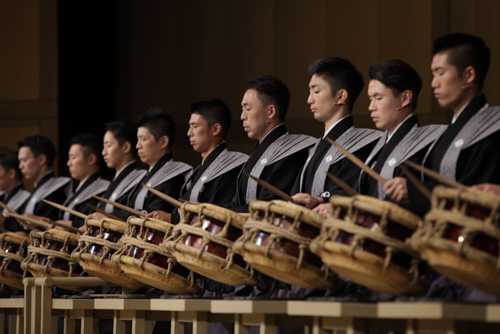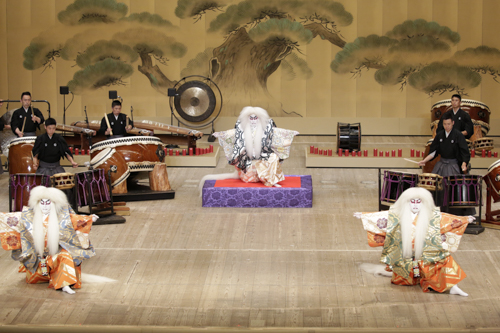“Deep into the Woods of Japanese Culture” by Melanie Taylor

This month Kodo is performing at Kabukiza Theatre as musicians for the new Kabuki production “Yugen.” It’s based on the sellout Tamasaburo Bando and Kodo collaboration last year, which went by the same name. Both the 2017 production and 2018 Kabuki are based on three iconic Noh plays: The Feather Robe, The Stone Bridge, and Dojoji Temple.

So, why see a new Kabuki work based on a collaboration based on Noh?
In short, this production is a trip to a deep, dark, intriguing part of Japan that you won’t find on TripAdvisor or the like.
You may not realize it from the flier, but this is your chance to go off the beaten track and deep into the woods of Japanese culture.
I saw last year’s version three times, and this year’s twice so far. I’m going back for a third time before it ends on Sep. 26. There’s something quite addictive about the world they conjure on stage and I feel compelled to go again while I have the chance.

In all honesty, this is unlike any Kabuki I’ve ever seen, and I’ve been fortunate enough to attend quite a few performances at Kabukiza Theatre over the past decade.
The big difference for me is probably the powerful beat. There is something about twenty Kodo performers on that immense stage playing with such soul and precision that draws you in and carries you away with more force than usual. As if connecting the audience to the stage on a primal, foot-tap inducing level, I felt the addition of more drums and new music made the Kabuki less foreign and more superhuman than usual. Prepare to be stunned by the power, grace, and presence of the actors. It’s extraordinary and breathtaking.

Quite simply, Yugen is a spectacular, entertaining event that will show you Japanese culture with splendour and intensity, give you goosebumps, make your jaw drop and your heart beat in time with the stage and audience members.
While it might be the most Japanese experience you’ll have in Japan, I suspect you’ll also leave feeling more connected to the humans all over the world. I can’t help but thinking that human beings doing their best on stage, right before our eyes, inspire us all the more in whatever we strive to do each day. In an age of YouTube and people happy to watch a DVD if they can’t attend a performance, “Yugen” reminds us of the many roles of the theater: to delight, to surprise, to remind us of human effort and ability, and to recharge our souls. I could go on.
I don’t want to add any spoilers, so I’ll just urge you once more: if you’re in or near Tokyo, I really hope you can see this performance.

And I invite you to share your feedback after you attend.
Kodo will be using this valuable experience to inspire our new compositions and productions, so we would appreciate your insight to help us entertain you all the more!
Photos: Takashi Okamoto
Stage Production: Shochiku Co. Ltd.
All rights reserved.












